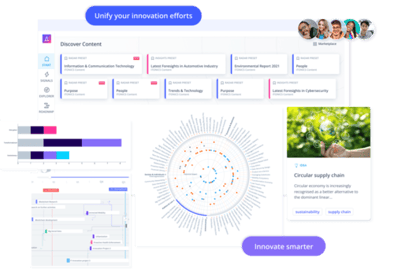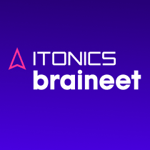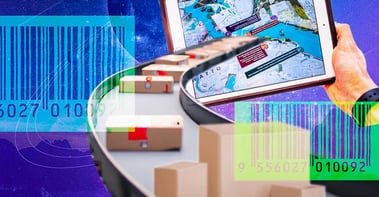This article explores the trends and technologies impacting supply chain resilience, robustness, and traceability.
Supply chains are the backbone of commerce, and now more than ever, they are the backbone of e-commerce. The complexity of globalized supply chains has been put through its paces, enduring the shocks induced by the global COVID-19 pandemic and the subsequent acceleration of digitalization. Supply chain disruptions impact the availability and delivery of goods, affecting the customer experience and the perception of brands, ultimately creating opportunities for competitive shifts. The vulnerability of supply chains can reverberate throughout organizations and destabilize operations, which, together with changing customer preferences, require a perspective of the broader influences shaping supply chains of the future.
6 emerging trends and technologies influencing supply chains
Our analysts continuously scout for new drivers of change and monitor the evolution of the nearly 170 trends and emerging technologies on the ITONICS Innovation OS. The six trends and emerging technologies outlined below can provide insight into market developments and how they impact your organization and the resilience of your supply chain.
Supply chain trends emerge from the pandemic
The reliance on goods from the far corners of the planet became apparent when global supply chains were paralyzed during the global pandemic. The mantra of sustainability expanded beyond its widely adopted meaning to include the sustainability of businesses impacted by supply chain disruptions. The inability to supply essential goods and integral aspects of a business's service offering put the existence of many companies on the line, forcing them to review their offering and, ultimately, their supply chain. Similarly, carbon-conscious customers demand sustainable business practices from the brands they choose to support. The confluence of a changing macro environment and customer needs has given rise to Localized Production, a featured trend on the ITONICS Innovation OS. Also known as reshoring, where manufacturing and production take place closer to home, Localized Production stimulates local economies and contributes to supply chain agility and resilience through local sourcing.
Another economic side-effect of the global pandemic is the exponential growth of e-commerce and the uptake of comprehensive digital services. It has been widely reported that e-commerce sales increased by 43% to $815.4 billion in 2020. While the trajectory of e-commerce sales has tapered somewhat, post-pandemic online consumer behavior patterns are entrenched. Companies are leveraging their online returns policy to improve the online customer experience in competing for a more significant share of wallets. This has led to a spike in reverse logistics – the supply chain process of returning products from customers back through the supply chain to the retailer or manufacturer. The global reverse logistics market was valued at USD 840.7 billion in 2021 and is expected to expand at a compound annual growth rate (CAGR) of 12.4% by 2028.
As last-mile deliveries continue to increase, our ITONICS analyst-rated technology, Unmanned Deliveries, indicates the potential of this technology to disrupt supply chain ecosystems across industries. With faster delivery, greater cost-effectiveness, and improved sustainability and accessibility by using autonomous vehicles, drones, or robots to support ground delivery services, unmanned deliveries will likely become a permanent feature in future supply chains.
Supply chains of the future
The drive to decarbonization underpinned by the need for a greener, more sustainable world has led to increasing occurrences of greenwashing as companies strive to ensure optimal profits and shareholder returns. The deceptive nature of greenwashing damages brand value and erodes customer trust, as was evidenced in the 'dieselgate' emissions scandal in 2015 that cost Volkswagen more than €30 billion. ITONICS trend Radical Transparency outlines how discerning customers around the globe are increasingly demanding greater transparency, enabled by technologies such as Distributed Cloud, the development of Distributed Manufacturing trend, and the rise of blockchain supply chain solutions. Furthermore, ITONICS curated trend, Tracing Origin, outlines how growing consumer awareness of sustainable practices influences the requirement for greater transparency in manufacturing and producing goods. The ability of companies to provide transparent and traceable information regarding a product's provenance will foster loyalty among customers and improve brand value.
While recent supply chain disruptions can be described as unprecedented, the pervasive global uncertainty and increasing geopolitical volatility threaten supply chain stability and compel organizations to monitor and mitigate risks through transparent relationships with suppliers and customers.
Disruptions to the food & drink industry have persisted since the start of the pandemic. Labor shortages and transportation bottlenecks have exposed vulnerabilities, especially in global supply chains. The situation is made worse by increasingly severe and frequent weather events. As a result of these factors and global conflicts involving key players, the cost of doing business and, in turn, food prices continue to rise. To break this cycle of disruption and inflation, food & drink producers are seeking ways to improve the resilience and agility of their supply chains—from localizing production and reducing wastage to digitalizing and automating workflows.
Similar to the retail space, the food & drink industry experienced massive disruption due to the pandemic. Restaurants, supermarkets, and food & drink manufacturers rushed to meet their customers online with e-commerce solutions and on-demand (contactless) delivery. Lockdown periods accelerated the rollout and adoption of these solutions. While some habits are likely to revert to pre-pandemic “normalcy,” the online presence of the food & drink industry and demand for direct-to-consumer services will have permanence. This will require infusing technology (e.g., AI, automation, IoT, and dynamic routing) into existing distribution and delivery models to streamline operations and elevate the customer experience.
How to identify and monitor emerging trends and technologies relevant to your business with ITONICS
Our growing list of trends and technologies and thousands of relevant inspirations are real-world proof of innovation in action and a source of credible insights to ensure your strategy is focused in the right direction.
To ensure that your organization’s supply chain is robust and able to withstand potential future disruptions, consider the ITONICS Innovation OS as a go-to platform for foresight and to collaborate with team members and stakeholders around the most pressing issues impacting your organization.
Our analyst team has attributed predefined ratings to each trend and emerging technology in the ITONICS software based on criteria such as Potential Impact, Strategic Fit, Adoption Stage, and Technology Readiness Level. The various rating criteria empower teams to collaborate and define a central view of the perceived impact of relevant drivers on projects.
In the video below, our continuous foresight expert guides you through how to kick-start your innovation journey on the ITONICS Innovation OS.

Get started with the ITONICS Innovation OS
Have more time?












